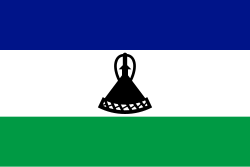 | |||
| Association | Lesotho Football Association | ||
|---|---|---|---|
| Confederation | CAF (Africa) | ||
| Sub-confederation | COSAFA (Southern Africa) | ||
| Top scorer | Ntsamaeng Tholo (6 goals) | ||
| FIFA code | LES | ||
| |||
| First international | |||
(Johannesburg, South Africa; 4 December 2024) | |||
| Biggest win | |||
(Johannesburg, South Africa; 6 December 2024) | |||
| Biggest defeat | |||
(Johannesburg, South Africa; 13 December 2024) | |||
| COSAFA U-17 Women's Championship | |||
| Appearances | 1 (first in 2024 ) | ||
| Best result | |||
The Lesotho women's national under-17 team, is a youth football team, which represents Lesotho and is controlled by the Lesotho Football Association, the governing body for football in Lesotho. The team's main objective is to qualify and play at the FIFA U-17 Women's World Cup and develop players for the main national team Mehalalitoe.